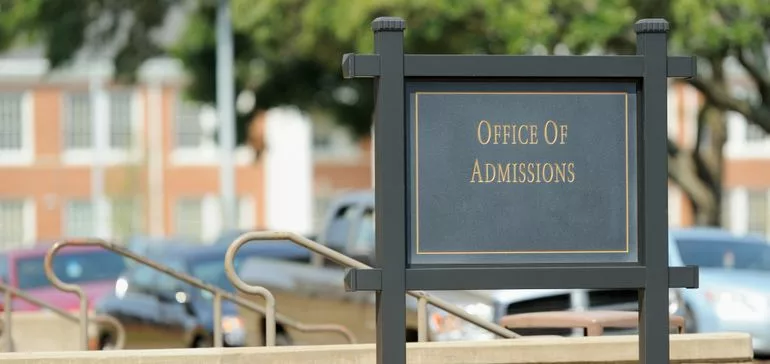[ad_1]
Dive Temporary:
- Variances in academic preparation for the duration of elementary and secondary college partly make clear the massive racial, gender and socioeconomic disparities in U.S. college enrollment charges, according to new investigation from the Brookings Institution.
- The scientists identified steep divides in university-heading premiums among college students with larger and reduced socioeconomic standing. Of students in the top quintile for socioeconomic status, 88.9% attended college, compared to just 51.2% of learners in the bottom quintile — leaving a virtually 38 share point gap.
- On the other hand, when researchers in comparison pupils with comparable amounts of tutorial preparation, the divide among all those two socioeconomic teams shrunk to 11 percentage factors. They noticed even more pronounced outcomes when inspecting distinctions by race and gender.
Dive Insight:
Policymakers usually place to school charges and admissions procedures for contributing to pervasive divides in enrollment premiums throughout scholar teams. But the paper’s researchers emphasised that they need to also be concentrating on disparities in tutorial preparing in the course of elementary, middle and higher faculty.
To explore the situation, they examined whether 15,000 students who ended up 9th graders in 2009 attended possibly a four-12 months or two-year faculty within just 18 months soon after their anticipated significant school graduation. The scientists calculated their educational preparing through several variables, which includes students’ GPAs, math check scores and no matter if they took large-stage programs this sort of as Highly developed Placement classes.
When managing for students’ tutorial planning, the researchers identified that gaps in school-likely rates amongst substantial and lower socioeconomic backgrounds shrunk considerably. In actuality, tutorial preparing accounts for about 70% of the divide, in accordance to their investigate.
Having said that, some of the divides persisted, specifically for pupils attending 4-12 months faculties. Close to a few-fourths of significant faculty students in the top socioeconomic quintile, 74%, enrolled in a four-calendar year higher education shortly soon after graduation, in comparison to just 23% of students in the base quintile. That represents a whopping 51 percentage position variance.
When managing for academic preparing, researchers uncovered the divide shrunk to 18 points — 49% of college students in the top rated quintile versus 31% in the base.
Researchers noted the remaining gaps are nonetheless regarding.
“I imagine it is fair to characterize these (socioeconomic status) disparities in four-12 months higher education enrollment as great,” Sarah Reber, a senior fellow at Brookings and co-writer of the report, stated during a webinar Monday to go over the paper’s findings.
Equivalent divides existed amongst racial and ethnic teams. Amid the sample group, 83% of Asian students attended college or university, adopted by 72% of White students, 63% of Hispanic pupils and 62% of Black pupils.
But when managing for academic planning, the purchase reversed — 79% of Black pupils enrolled in university right after graduation, adopted by 76% of Hispanic college students, 72% of White pupils and 71% of Asian students.
The researchers said they didn’t have a large enough sample of American Indian or Alaska Native and Indigenous Hawaiian or Pacific Islander students to involve in the assessment.
Accounting for tutorial preparing absolutely eradicated gaps involving men and females. Over-all, researchers discovered that 73% of woman higher faculty students attended college or university just after graduation, compared to 64% of male learners. Those people shares were being the identical, 64%, when evaluating pupils with identical amounts of educational planning.
Richard Reeves, a senior fellow at Brookings, cautioned larger training establishments against decoding the findings to mean that it’s up to other folks to test to resolve higher education-heading gaps among various college student groups.
“It’s the task of faculties to be university student-completely ready, as properly as the college students to be higher education-prepared,” Reeves reported all through Monday’s occasion. “That’s just the fact.”
[ad_2]
Resource url
Meet Our Successful Graduates: Learn how our courses have propelled graduates into rewarding
careers. Explore their success stories here!
Discover More About Your Future: Interested in advancing your teaching career? Explore our
IPGCE, MA, and QTS courses today!


